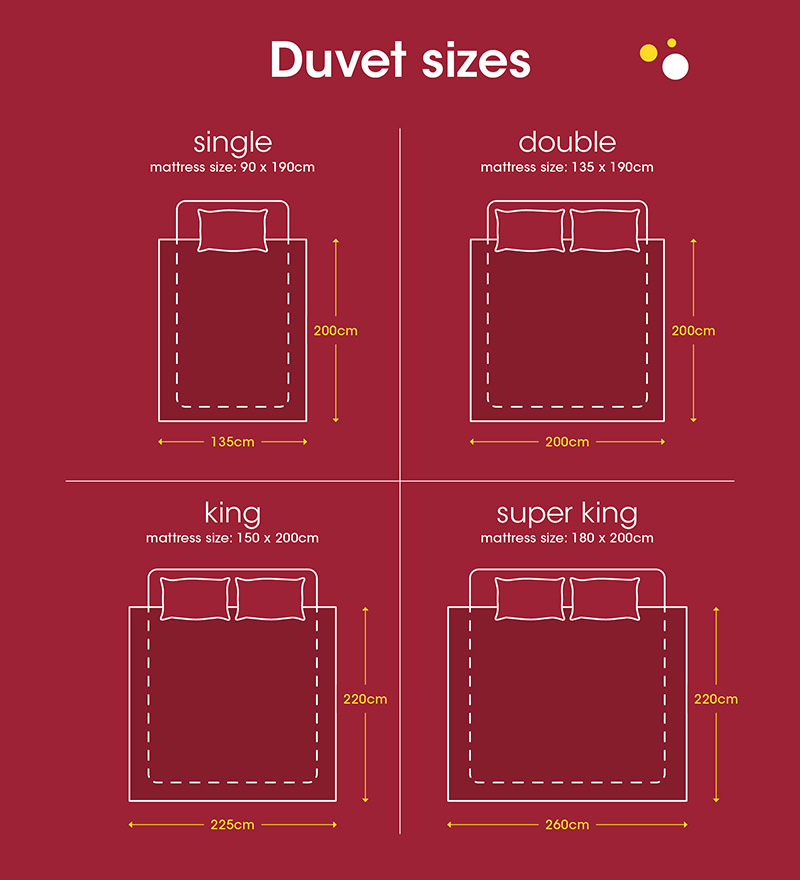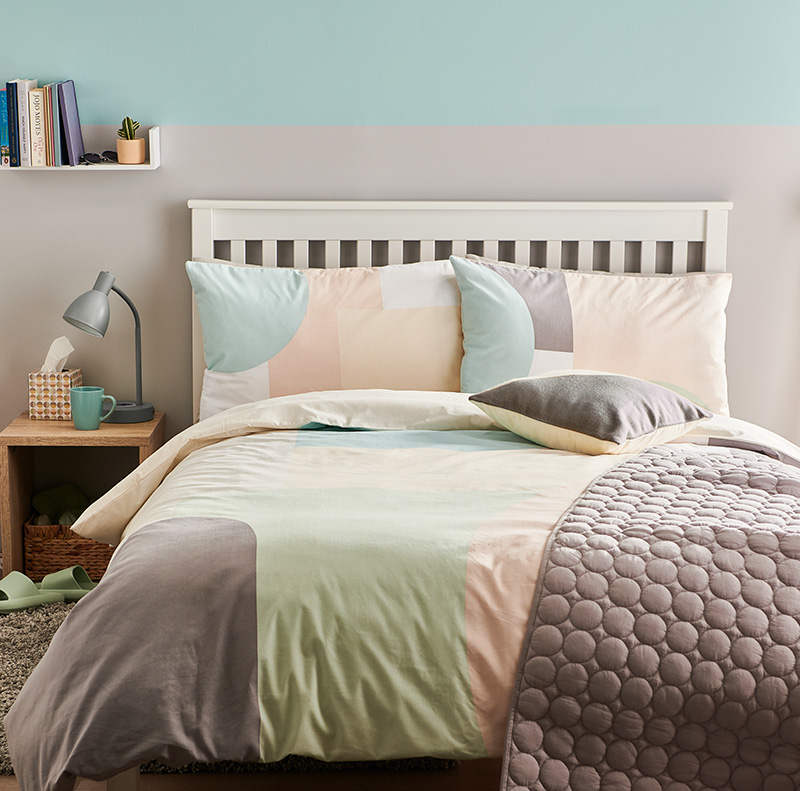A guide to duvets & pillows
On average, we spend about one third of our lives in bed, so why should it be anything less than supremely comfy? Your duvet & pillows play a large part in the quality of your sleep, making sure you wake up refreshed, well-rested, and ready to take on the day with vigour.
But what on earth is a tog? What size duvet do I need? Why should the firmness of my pillow affect my sleep quality? All these and more will be answered below, in your ultimate guide to duvets & pillows.
 By Alex
By Alex- 1st Feb 2024
- 5min read
- This blog was updated on 19th August 2025
Duvets
Snuggling up under the duvet after a long day is one of life’s little pleasures. When you’re buying a duvet, there are 3 main things to consider: size, tog, and material.
What size duvet do I need?
Depending on the size of your bed, you can choose a single, double, king, or super king size duvet to match.
However, there’s nothing to stop you choosing one size up from your bed size if you’re after a more luxurious sleeping setup. If you share a bed with someone who has a habit of stealing the duvet (not that they’d admit it, of course), then having the excess could be useful.
Here you’ll find the approximate UK bed sizes and duvet sizes to help you:

What’s a duvet tog?
‘Tog’. It’s a funny word. It gets better the more you say it.
Tog stands for ‘Thermal Overall Grade’. In duvets, the ‘tog’ is a number which refers to the heat retention of the bedding. The higher the tog, the warmer and cosier the duvet will be.
- 4.5 tog: good for warm weather, airy.
- 10.5 tog: great in Spring/Autumn or a good year-rounder.
- 13.5 tog: suits cold weather and cool houses. Really snuggly.
You’ll find other tog numbers available, but use these as a guide.
It’s worth remembering that the tog of a duvet has little to do with the physical weight of it. It takes more synthetic fibres to reproduce the same heat retention as natural fibres, meaning synthetic duvets are generally heavier than their natural counterparts despite being the same tog.
What’s the best tog to use all year round?
Duvets around the 10.5 tog mark are a happy medium for year-round use, being light enough to keep you cool in summer but with a decent level of warmth in winter.
A combi-duvet is a clever solution to the changing temperatures, providing a low-tog and medium tog duvet which snap together. You then have three tog options: lightweight for summer, medium for spring or autumn, and a high-tog combination duvet for when it gets very cold.
Having 2 different duvets can be useful, not just in the temperate department. Switching duvets gives you the opportunity to clean the duvet which isn’t in use, ready to store in underbed storage until needed.
If you don’t have space for multiple duvets, there are ways to keep cosy if you’re using the same tog all year. Electric blankets are a supremely snuggly way of keeping warm in bed, or you can add a splash of colour whilst keeping the heat in with a lovely warm blanket or throw.
Down, feather, or synthetic duvets?
There are a few different materials that your duvet can be stuffed with, and they all have different properties and benefits.
- Down duvets: made from soft and fluffy insulative fibres from duck or goose. They offer the best of both worlds in terms of heat retention and fluffy comfort, whilst also being breathable and lighter in weight to alternative fibres of the same tog. They’re not cheap, but you get what you pay for.
- Feather duvets: duck or goose feathers are often used in conjunction with down, as they provide a touch more support and ‘body’ to the duvet.
- Hollowfibre duvets: a popular choice for year-round duvets, this is a synthetic material which is a great value alternative to down & feather. As they aren’t made from natural fibres, these are great for anyone with allergies and are easy to keep clean.

Pillows
Resting your weary head after a long day of work, exercise, answering emails or running around after the kids is something to be savoured, so make sure it’s comfortable with a good quality pillow.
Sleeping positions & pillow firmness
Ever woken up with a sore neck because you ‘slept funny’? Depending how you sleep, a different firmness of pillow will be more comfortable and more supportive, lessening any nighttime discomfort.
- Side sleepers: opt for a firm and deep pillow if you sleep on your side to keep your neck and spine in alignment.
- Back sleepers: a medium firmness is good if you mostly sleep on your back, though they are also a good all-rounder if you tend to move about a bit!
- Front sleepers: less support is needed to correct your alignment if you sleep on your front, so a softer pillow will be better for you.
Down, feather, or synthetic pillows?
Just like your mattress, the material that sits inside your pillow will have unique properties.
- Down pillows: as they’re made from the soft and fluffy insulation from duck or goose, your head will sink into a down pillow and form around you. Especially good for front sleepers.
- Feather pillows: 100% feather pillows are rare, as no one really wants a feather quill to poke them in the face while they sleep. However, they do offer a firmer structure, which is why you’ll often find pillows with both feather and down to suit back sleepers.
- Hollowfibre pillows: If you suffer from allergies, hollowfibre synthetic pillows are hypoallergenic and available in a range of firmness options to suit your sleeping position. They are also easy to clean, so you can keep on top of hygiene.

Now you know the materials and sizes available, you can take on your next duvet and pillow purchase with confidence, and rest easy in the knowledge that you’ve got the right one for you!
For the latest news and offers, follow us on Facebook, Instagram, X or TikTok.